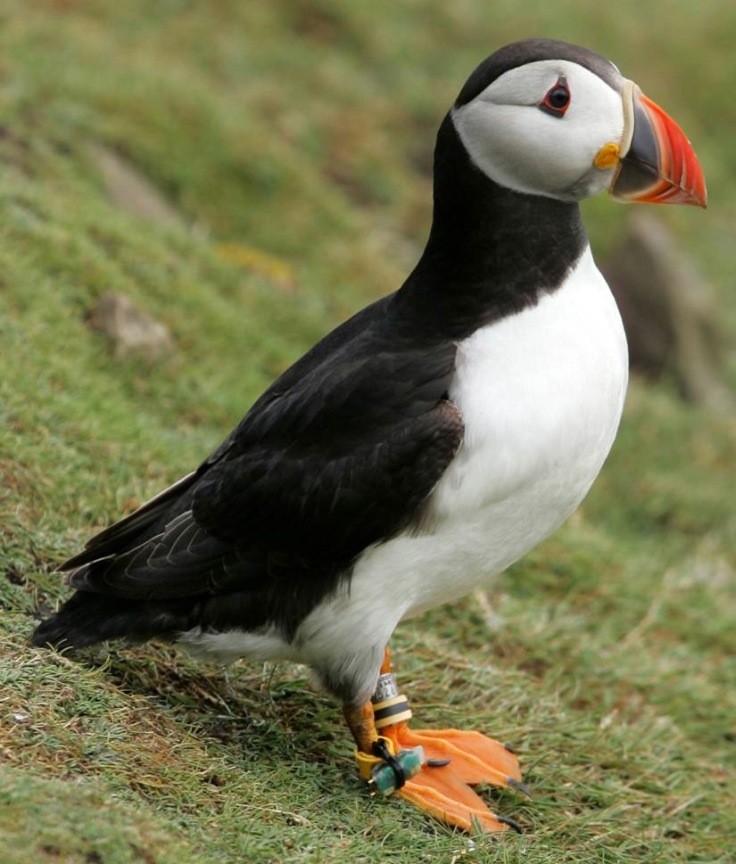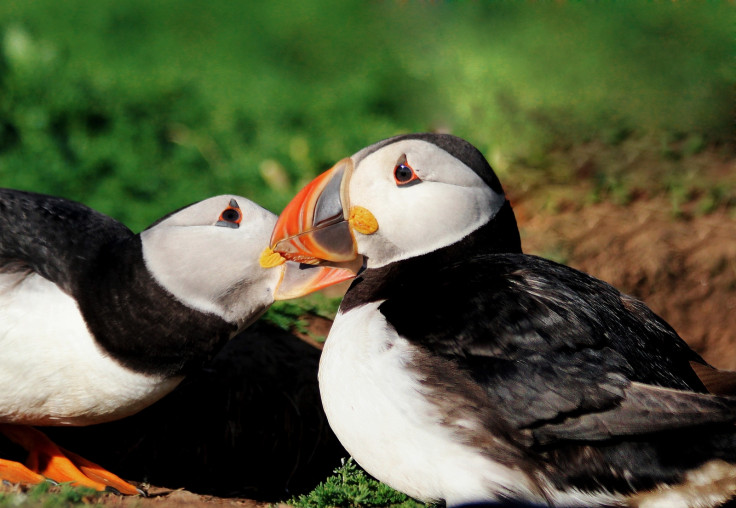Puffins that stick with their soulmate through thousand-mile migrations have more chicks
A first look at Skomer Island puffins' behaviour on their annual migrations shows the benefit of staying close together.
Taking the same route on a long and arduous migration back to the breeding colony leads to puffin pairs having more success in raising their chicks.
The first long-term study of its kind of 12 breeding pairs of Atlantic puffins – called soulmates, as they are monogamous and mate for life – has found that pairs that stay close throughout their long migrations are more likely to have chicks that survive the following spring.
The puffins were tagged with tiny geolocators at their breeding colony on Skomer Island off the coast of Pembrokeshire, south-west Wales. They were then monitored for six years on their migrations, which can be from a few hundred miles or up to thousands of miles from Labrador Island off the coast of Canada.
"It requires a lot of patience. They're quite shy," study author Annette Fayet of the University of Oxford told IBTimes UK. "We have to be very patient and spend a lot of time on the colony to catch just a few. We handle them for just 10 minutes or less and fix the tag as quickly as possible."
These tags allowed the first look at puffin pair behaviour away from the breeding colonies, which had been largely a mystery. It turns out that there is a reproductive benefit for puffins that stick close together.
This is not simply because puffins who have stronger bonds, who tend to raise healthier chicks, also tend to fly close together, Fayet added.
"We think that it is something about flying together that leads to this effect. If a pair was doing badly one year but then they followed similar routes, then when they came back they would do better," she said.

The puffins who stuck close together tended to return to the colony at the same time. This could be the crucial factor in determining their success, Fayet said. Being exposed to the same environmental conditions, such as daylight length, temperatures and so on, could help to synchronise the birds' return to the colony.
"Timing their arrival could allow them to breed earlier. They reunite together, exhibit courtship behaviour where they tap their beaks together – a bit like kissing, I guess – and then they mate."

Within two weeks the female will lay an egg, which they take it in turn to incubate. Then they take it in turn to feed the puffling until it leaves its nest one night to tumble off a cliff, and hopefully survive. About three years later the young puffin will return to the breeding colony for the first time.
Understanding how puffins breed successfully could help conservation efforts to boost puffin numbers. The Atlantic puffin is classed as vulnerable according to the International Union for Conservation of Nature (IUCN).

"Puffins have been doing pretty badly recently," said Fayet. "They have been declining for decades, in the UK and also in the big colonies in Norway and Iceland. "All this work we're doing could ultimately help to protect them. That's what we hope."
The research is published in a paper in the Marine Ecology Progress Series.
© Copyright IBTimes 2025. All rights reserved.






















